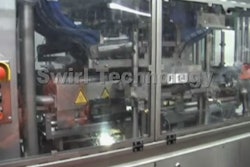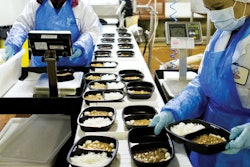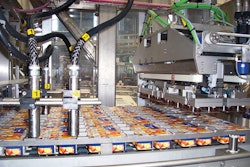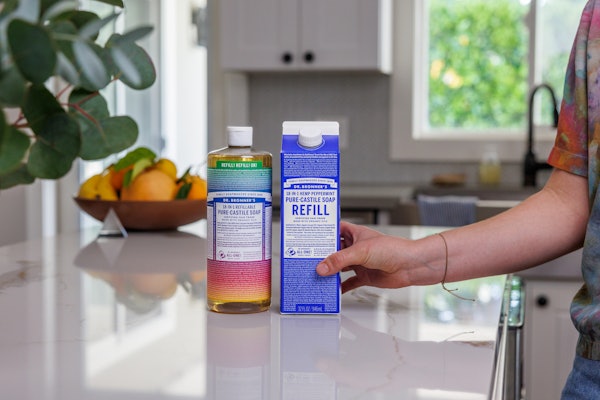This being real life, after all, materials and structures typically carry both advantages and disadvantages.
A specific observation: California legislators say that polyvinyl chloride in packaging is such a serious threat to health and the environment that they need to ban it, and that would include PVC food packaging. Advocates of the bill are alleging that PVC is a serious risk to health and the environment. Among those saying it isn’t is a former leader of Greenpeace.
Summary of these observations: Yep, we got ourselves a real humdinger of a squabble here.
Meantime, the U.S. Congress is toying with banning phthalates from toys and other products for children due to concerns with endocrine disruption effects, and phthalates leaching from PVC is just one of the issues on the Californians’ list of concerns.
California bill AB 2505 would, starting in 2013, prohibit making, selling, importing, or distributing in California a rigid PVC packaging container, or a flexible PVC packaging container after 2015. Violations would bring penalties.
“Rigid PVC packaging container” is defined in the bill as packaging composed “predominantly” of PVC and has a cup, bottle, bowl, clamshell, blister pack or other shape, and has “inflexible or finite shape or form.” “Flexible PVC packaging container” is defined in the bill as packaging made “predominantly” of PVC in a sack, pouch or other shape, or as shrink or stretch wrap, in a flexible shape or form.
Except that neither of these categories would include containers for drugs, whether prescription or over-the-counter, or for medical devices. They are exempt from the ban. Drug blister packs is one example, as are IV-fluid bags and tubing. PVC is especially well suited to being made into a variety of shapes requiring flexibility and durability, and products for which clarity is helpful.
Also exempt from the ban would be packaging for containers of petroleum-based products like fuels or lubricants. Exempt too is purely transport packaging that is not made available to consumers.
Conspicuously not exempted, and therefore banned, would be food packaging uses of PVC.
The bill itself says it’s based on findings that include PVC’s risks to human and environmental health, during its production, use, and disposal. But opponents have ready answers for these assertions.
For example, the bill asserts that some PVCs contain phthalates and heavy metals. But the latter are already prohibited from being in packaging in appreciable amounts by the CONEG toxics legislation that has been adopted in about 20 states, most recently in California.
The bill says PVC is not recycled very much. The Vinyl Institute says that “over 1 billion pounds of vinyl are recycled every year” (though it’s not post-consumer), and that automated sorting machines can easily sort out the vinyl. Also, they point out that PVC is used for blister or stretch wrap and other applications in which packaging materials are not typically recycled, no matter what they are made of. Further, some commercial uses of vinyl are the subject of substantial recycling and take-back programs, they note.
The bill says production is a danger because it involves the use of vinyl chloride, a known carcinogen. On the contrary, OSHA data show “injury and illness rates among vinyl workers” are “a fraction” of the averages for manufacturing and chemical industries, and communities near manufacturing facilities are already protected by a variety of measures.
It seems reasonable to ask why, if PVC is such a safety scourge, the bill would contain so many exemptions that would allow its continued use. This is a contradicition the bill’s opponents have pointed out.
As for that former Greenpeace leader, Patrick Moore, he wrote a letter to the San Francisco Chronicle in June opposing the proposed ban. He called PVC “one of the most sustainable, versatile, and cost-effective materials available,” and he said the proposed ban was “wrong-headed” and has “no basis in science.” He suggested the proposed ban was “being driven by an extremist political agenda that has little to do with science or sustainability.”
What is the ban motivated by, then? Moore’s letter doesn’t say, but Allen Blakey, vice president at the Vinyl Institute, has a theory: “They’re taking their dislike of chlorinated plastics overall, applying it to the waste stream, and singling out PVC unfairly.”
If increasing recycling is the motivation, Blakey notes, “The ban will make no difference in recycling of packaging waste, because nonbeverage-container plastics are not commonly recycled,” and PVC is not widely used for beverage containers. He also points out that PVC can be recycled, melted down, and remolded, but the economics rarely work. And recyclers might consider PVC articles in the recycling stream to be contaminants, but Blakey says they seem to be well capable of sorting them out and successfully recycling the PET or HDPE they are aiming for.
Among those opposing the bill and taking issue with the alleged safety concerns are a long list of trade groups. These include, not surprisingly, the Vinyl Institute, but also including the Grocery Manufacturers Association, American Chemistry Council, Society of the Plastics Industry, Toy Industry Association, and a host of California-based industry groups.
In a July letter to California legislators, the industry groups said the bill’s premise that PVC created health or environmental issues is “false,” and they further pointed out the “absurd situation” created by the bill’s exemptions from the ban which include uses involving a great deal of human exposure and other exemptions for uses that would result in a lot of material in the recycling stream.
The opponents pointed to the “considerable resources” that would be needed to monitor compliance with the ban. They also argued that, if, as the bill found, PVC packaging is associated with some level of contamination with the heavy metals cadmium and lead, just enforce the state’s existing law based on the CONEG toxics legislation that prohibits significant amounts of heavy metals in packaging. You would get much the same results without wasteful expenditures of state resources.
Bryan Early of Californians Against Waste, an advocate of the bill, says some of the exemptions are in the bill “due to federal regulatory overlap (medical devices), safety issues (he says it’s not a good idea to recycle these even if they aren’t made of PET), and certain packaging used only in transportation.”
This ban-but-then-exempt business is, at best, a political compromise to get the bill passed, and at worst, a built-in contradiction that proves the bill makes no sense.
A final observation: Here’s hoping the California ban does not pass. It appears to be based on unfounded fears. Moreover, at some point someone will likely complain that a state ban on a federally permissible product unduly burdens interstate commerce, which is a Constitutional no-no, and was based on faulty facts.
Eric can be reached at [email protected], and visit his firm’s Web site at www.ericfgreenbergpc.com.























